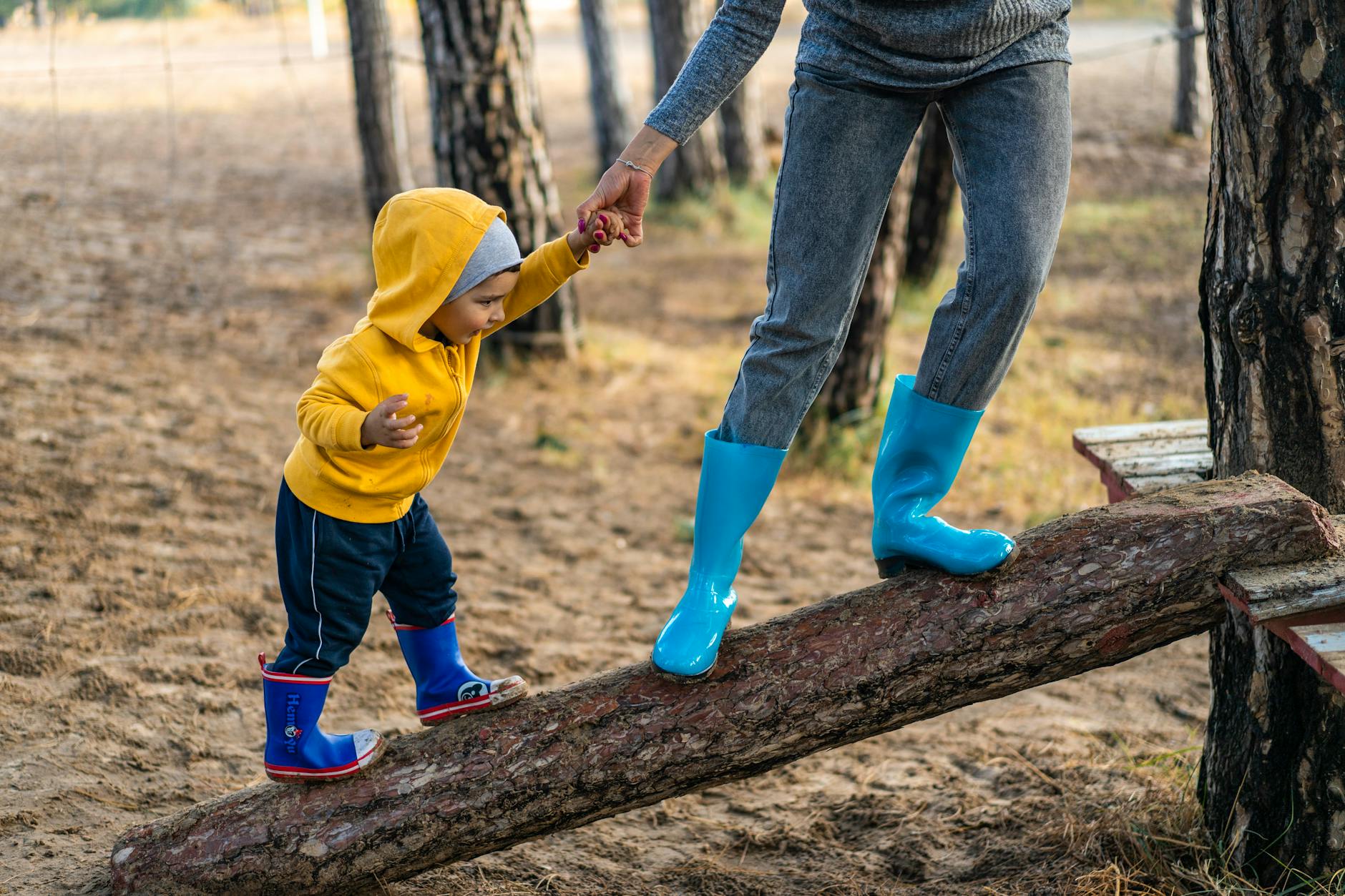How to Manage Toddler Fears and Anxiety: Simple Steps for Calm and Confidence
Every toddler has big feelings they don’t always understand. Fear of loud noises, the dark, or being away from mom or dad is normal at this age. Almost every child deals with worry or scary thoughts as part of growing up.
How parents handle these moments matters. Calm support helps your child feel safe and teaches them how to cope. Responding with patience and kindness shapes a child’s confidence for life—one small moment at a time.
What Causes Toddler Fears and Anxiety?
It’s completely normal for toddlers to go through phases of fear and anxiety. These feelings are a part of healthy development as children learn about the world and discover what feels safe—and what doesn’t. Some fears are sparked by new abilities and awareness, while others grow out of changes at home or experiences that feel overwhelming. Understanding the root causes can help parents respond with empathy and practical support.
Developmental Origins of Fear
As toddlers’ brains grow, so do their imaginations and emotional skills. This growth is the main reason fears start popping up. When young children begin to understand that mom or dad can leave the room—and might not return right away—separation anxiety appears. Their growing ability to imagine things that aren’t there also brings up new, imaginary fears (like monsters under the bed).
Fears at this age are a sign that the brain is working as it should. The child is figuring out what’s safe and what could be a threat, even if the threat isn’t real. For example:
- Around 8-9 months, babies often show stranger anxiety, clinging to familiar faces and avoiding new ones.
- By toddlerhood, kids may fear separation, loud sounds, or things they can’t see in the dark.
- Preschoolers start to worry about imaginary dangers, like ghosts or monsters.
These patterns are a normal part of childhood, even if they feel intense or come on suddenly.
Common Triggers in Everyday Life
Some fears seem to show up overnight. Others build slowly. Most are linked to things toddlers experience in daily life, both real and imagined. Here are some of the most common triggers:
- Strangers: Unfamiliar people can feel scary, especially when parents aren’t close by. Stranger anxiety usually peaks between ages 1 and 2.
- Separation from parents: Even a quick goodbye at daycare can spark big feelings. This is why many kids cry at drop-off or bedtime.
- Loud noises: Vacuum cleaners, thunder, fireworks, and barking dogs often lead to tears. Sudden, intense sounds can startle young children.
- Animals: Dogs or other animals might seem huge and unpredictable to toddlers, especially if a child has had a negative experience.
- Fear of the dark: When bedtime arrives, shadows or changes in light can make ordinary objects appear frightening.
- Imaginary creatures: Monsters under the bed, ghosts, or the “bad guy” are common at this stage, thanks to vivid imaginations.
- Unfamiliar places: New environments, like crowded stores or strange houses, may bring feelings of uncertainty and fear.
Knowing what sets off these reactions can make it easier to plan support and routine changes that help a child feel braver.
 Photo by Mikhail Nilov
Photo by Mikhail Nilov
Role of Family Dynamics and Environment
A toddler’s feelings don’t exist in a bubble. Family life shapes them every day. Big changes—like moving, a new sibling, a divorce, or a parent returning to work—can all make fears worse or bring new ones. Even “good” changes, like a new home or moving to a big-kid bed, can spark anxiety.
Children often pick up on the moods of adults around them. If a parent is stressed, anxious, or struggling, toddlers may mirror those feelings with their own worries or clinginess. They’re experts at sensing tension, even if no one says a word.
Common environmental effects on toddler anxiety include:
- Changes in daily routine (like new schedules or caregivers)
- Stressful life events (such as illness, grief, or separation)
- Parental anxiety (children may imitate coping styles or overreact if adults are visibly scared or tense)
- Household conflict (loud arguments, frequent changes, or lack of structure)
When parents notice these patterns, they can respond faster. Providing steady routines, reliable comforts, and honest reassurance helps toddlers build trust and resilience over time.
How to Recognize Signs of Anxiety in Toddlers
Anxiety isn’t always easy to spot in toddlers. These little ones often don’t have the words to explain how they feel inside. Instead, their worries show up in their bodies and behaviors. Parents may notice a mix of physical and emotional changes, sometimes mistaken for a phase or just acting out. Knowing what to look for brings peace of mind and helps you support your child early, before stress turns into a daily struggle.
Behavioral Signs of Anxiety
For many toddlers, anxiety comes out in their actions long before they can talk about it. These behaviors often seem sudden or harder to manage than usual.
- Clinginess: An anxious toddler may stick to your side like glue. They might follow you around, cry when you leave the room, or refuse to let anyone else help them.
- Tantrums or Meltdowns: Strong worries can feel overwhelming for a small child. Extra-long tantrums, screaming, or refusing to move may be signs of anxiety—especially if there’s no obvious trigger.
- Avoidance: Some toddlers avoid people, places, or things that make them feel scared. This might mean hiding, running away, or refusing to go into a certain room.
- Repetitive or Rigid Behaviors: Anxious toddlers may line up toys in a certain order, insist on doing things the same way every day, or get upset when routines change.
- Frequent Reassurance-Seeking: They may ask the same questions over and over: “Are you coming back?” or “Will there be loud noises?” This is a sign they don’t feel sure about what’s coming next.
Physical Signs to Watch For
Anxiety in toddlers doesn’t just live in the mind. It often shows itself in the body. These symptoms may look like common childhood complaints but keep returning without a clear medical cause.
- Stomachaches and Headaches: If your child often complains of a sore tummy or head, anxiety could be the reason—especially if these come up before stressful events like saying goodbye at daycare.
- Trouble Sleeping: Many anxious toddlers fight bedtime, wake up crying, or have nightmares. They may also have a hard time settling down at the end of the day.
- Restlessness or Fidgeting: An anxious child might wiggle, bounce, or have trouble sitting still. Some develop tics or repeat certain body movements.
- Changes in Eating: Some toddlers stop eating well or become picky when they’re stressed. Others may overeat for comfort.
Emotional Clues of Anxiety
Anxiety shapes a toddler’s mood as much as their actions. These emotional symptoms often go hand in hand with behavioral and physical changes.
- Increased Irritability: Small frustrations lead to tears or angry outbursts. The child might seem more sensitive or easily upset.
- Crying More Than Usual: Some toddlers weep over little things, especially when routines change or new people are around.
- Unusual Fears: You might notice strong fears about the dark, loud sounds, animals, or being alone—even if these didn’t bother your child before.
- Heightened Sensitivity: Anxious toddlers may react to noises, lights, or other sensations more than usual, covering their ears or shrinking away from touch.
 Photo by Liza Summer
Photo by Liza Summer
When to Be Concerned
Anxiety comes and goes for most toddlers, but sometimes it lingers. If you notice:
- Symptoms sticking around for weeks
- Big changes in sleep or eating habits
- Anxiety so strong it disrupts play or learning
It’s a good idea to talk with your child’s doctor. Early support makes a huge difference and helps your toddler feel safe again.
Spotting these signs early means you can give your child—and yourself—that sigh of relief, knowing you’re not alone and there are steps you can take.
Practical Strategies for Managing Toddler Fears and Anxiety
Toddlers don’t just wake up one day hoping to be brave—they learn by watching, trying, and knowing someone cares when they feel unsure. Supporting a child through fear isn’t about making the fear vanish. It’s about teaching them that feelings are safe, temporary, and something they can handle. With some practical approaches, you can lay a strong foundation that helps your toddler move from anxious to more confident, step by step.
Validating and Naming Feelings: Tips on Acknowledging Fears Without Reinforcing Them
Toddlers experience big emotions they can’t always explain. When parents pause to recognize and name these feelings—like “You’re scared of that thunder, aren’t you?”—it teaches kids that every emotion is okay.
- Acknowledge without judgment: Let your child know it’s fine to be scared, sad, or angry. Say things like, “I see you’re upset because that dog barked.”
- Use simple feeling words: Use words like “mad,” “scared,” or “happy.” Keep it short—complicated sentences don’t help a toddler connect the dots.
- Separate feelings from actions: Let them know all feelings are safe, but not every action is. “It’s okay to feel mad, but it’s not okay to hit.”
- Routine feelings check-ins: Ask at bedtime or after daycare, “How was your day? Was anything scary or fun?” Getting used to naming emotions makes talking about them easier next time.
When you do this often, your toddler feels seen and learns that feelings don’t have to be hidden or fixed—they just need a safe place to be felt.
Gradual Exposure and Building Confidence
For toddlers, big fears often feel impossible to face all at once. Break things down and give your child many tiny steps toward feeling braver.
 Photo by Tara Winstead
Photo by Tara Winstead
Start with what your child can handle now and gently stretch that comfort zone, celebrating every effort:
- Bravery ladders: Draw or list tiny steps toward facing a fear—like getting close to a barking dog on a walk, or turning on the bedroom light by themselves.
- Set achievable goals: Tackle the smallest, least stressful step first. Move forward only when your child shows curiosity or comfort.
- Praise efforts, not just results: Say, “You were brave to listen to the thunder with me,” even if your child was still nervous.
- Reflect on wins: After a new step, remind your child, “Remember when the thunder scared you, but you held my hand and listened together? You did it.”
Success builds on itself. When a child handles a little fear, they’re better equipped to handle the next big moment.
Modeling Healthy Coping Behaviors
Your toddler learns about calm and courage by watching you. Showing how you handle worry or frustration gives your child a real-life example to copy.
Key ways to model healthy coping include:
- Self-talk out loud: Say, “That noise surprised me, but I’m taking a deep breath. I’ll be okay.” Hearing you talk through your feelings demystifies the process.
- Use visible calming techniques: Practice slow breathing, squeezing a stress ball, or getting a drink of water when you feel upset. Invite your child to join you: “Let’s breathe together.”
- Admit feelings, don’t ignore them: Say, “I’m a little nervous, but I know we can try together.” This teaches kids that feeling worried is normal and can be managed.
- Take care of yourself: When you practice self-care, your child learns that rest and breaks are healthy, not signs of weakness.
Consistent modeling is more powerful than any script or story. Children look up to you and will almost always try doing what you do, not just what you say.
Establishing Predictable Routines
Structure is a comfort for anxious toddlers. Predictable routines help kids know what to expect next, which tamps down anxiety about the unknown.
Routines don’t have to be rigid—a little flexibility is healthy. But having steady daily patterns soothes nerves, especially during transitions like bedtime, leaving for daycare, or moving to a new room.
- Create visual schedules: Use pictures or drawings to lay out daily steps (snack, play, bath, pajamas, story, bed).
- Transition rituals: Develop simple cues, such as singing a cleanup song, turning on soft music before sleep, or using the same goodbye phrase. These signals tell your child what comes next, removing surprises.
- Bedtime consistency: Stick to the same order each night. Calm, slow routines prepare the brain and body for rest, lowering nighttime anxiety.
- Talk in advance: Before a new experience or big change, talk through what will happen. “First we’ll go to the doctor, then we’ll get a sticker, then we’ll come home and play.”
Predictability brings a sense of control—something every anxious child craves. The more your toddler knows what’s coming, the less space there is for worry to take over.
When to Seek Professional Help
Most toddler fears fade on their own with patience, routines, and loving support. Sometimes, though, worry won’t budge and starts to take over family life. When normal fears grow so big that they get in the way of play, sleep, or everyday fun, it’s smart to consider help from a professional. Here’s how to know when anxiety has moved beyond a phase and what to expect if you reach out for guidance.
 Photo by Alex P
Photo by Alex P
Red Flags for Severe or Persistent Anxiety
Some anxiety is expected during toddlerhood. But there are clear signs that a child’s fears are stronger or more lasting than they should be. Watch for these red flags:
- Worries that won’t go away: Fears that stick around for more than a month and don’t seem to get better with reassurance or routine changes.
- Daily life gets interrupted: Anxiety keeps your child from sleeping, eating, going to daycare, or enjoying playtime.
- Physical complaints: Lots of unexplained tummy aches, headaches, or feeling tired or shaky, especially when stress is high.
- Avoiding people or places: Refusing to go places, hiding from new situations, or clinging to you so tightly that you can’t even step out of sight.
- Meltdowns and rigid routines: Big outbursts when routines change, or needing things to be just so—or the meltdown won’t stop.
- Extreme clinginess: Needing constant reassurance, being unable to fall asleep alone, or showing physical distress (crying, screaming) whenever separated.
If these patterns stick around, it’s a sign anxiety has shifted from normal worry to something that may need outside support.
What to Expect From a Professional Assessment
Starting the journey to get help for your toddler can feel intimidating, but the process is friendly and designed for families. Specialists—often child psychologists or pediatric mental health experts—use a few simple tools to understand your child’s needs:
- Parent interviews: You’ll talk about your child’s behavior, stress points, routines, and family history.
- Questionnaires and checklists: These help compare your child’s symptoms to what’s typical at their age.
- Observation and play: Professionals may watch your child in play or during gentle tasks to see how anxiety shows up.
- Medical rule-outs: Sometimes, a doctor will check for physical issues to make sure something else isn’t causing the symptoms.
After gathering information, the team will discuss what they’ve found and make a plan that fits your family. The goal isn’t to “label” your child, but to figure out the best kind of support.
Types of Therapy and Support
There are several effective ways to help a toddler manage anxiety—and most are gentle and family-focused. Treatment is tailored to how your child learns and what makes your family comfortable:
- Cognitive-Behavioral Therapy (CBT): This is the top therapy for young children with anxiety. In simple language, CBT teaches little kids (and their parents) ways to spot worries and try new ways to respond. Stories, games, and rewards make the process fun and easy to follow.
- Parent coaching: Therapists often work directly with parents, coaching them in strategies to help their child feel safe and try new things in tiny steps.
- Play therapy: Play therapists use toys and art to help kids express what’s hard to say out loud and build coping skills.
- Medication (if needed): Medication is rarely a first step for toddlers, but it may be talked about if anxiety is severe and therapy alone isn’t working. Doctors use medicines like SSRIs very carefully and only when truly needed.
Support may also include connecting with other families, working with teachers or daycare staff, and finding tools to use at home. The key is working together, step by step, until your child—and you—feel confident again.
Seeking professional help shows your child that everyone needs support sometimes, and that struggling with anxiety is nothing to hide. Early help makes a lifelong difference, giving your child tools to handle big feelings now and later on.
Conclusion
Toddler fears and anxiety are a normal part of growing up. Every child faces worries as they learn about their world, and every parent feels concerned when big feelings show up. With steady support, routines, and an open ear, you can guide your child through these challenges and help them build stronger confidence.
The steps you take—listening, naming feelings, practicing bravery, and staying calm—teach skills that stick for life. Trust that your patience and understanding really do make a difference. If worries linger or seem to overwhelm your child, reaching out for help is a sign of care, not weakness.
Thanks for reading and caring about your child’s emotional growth. Share your own tips or stories below, and remember: you know your child best. With time and kindness, these tough moments turn into building blocks for a calmer, happier future.
